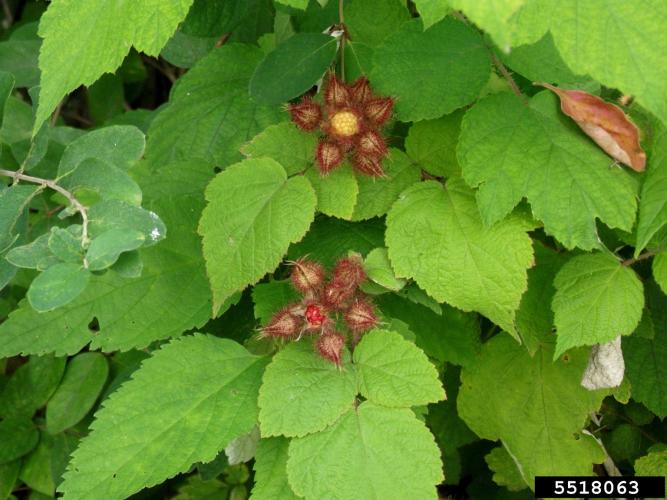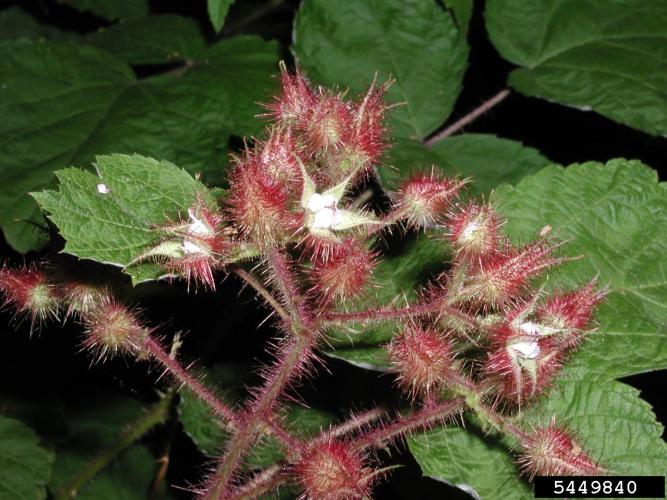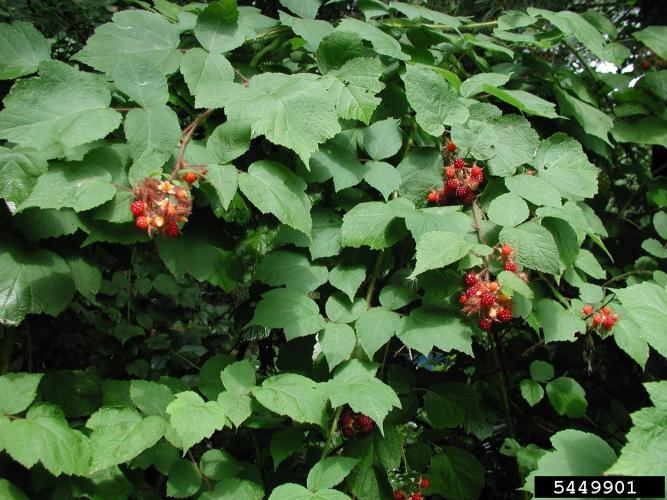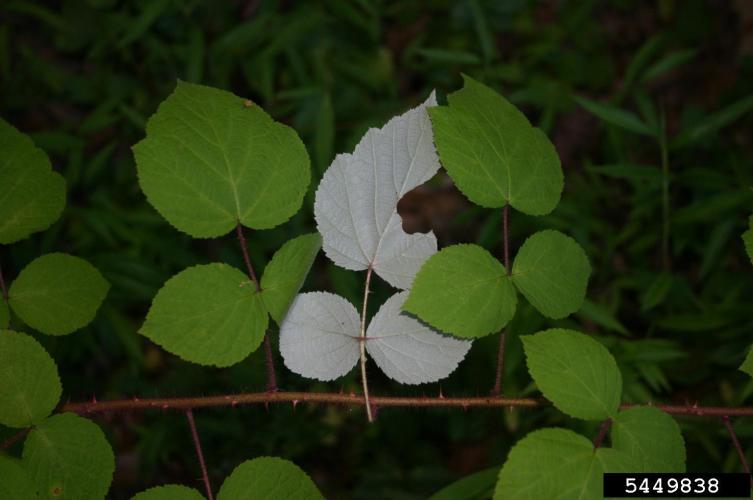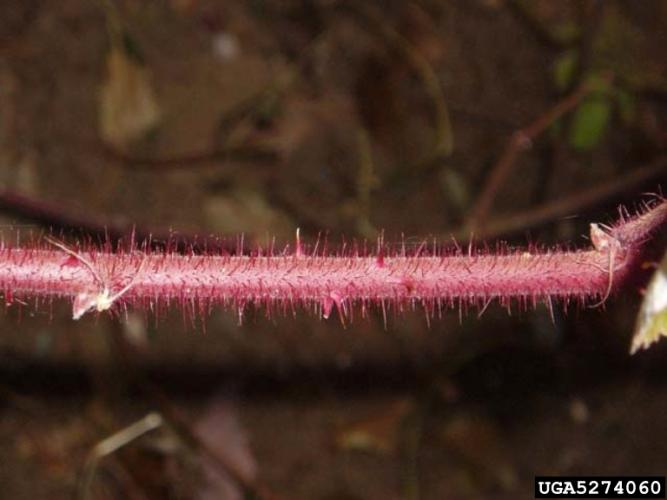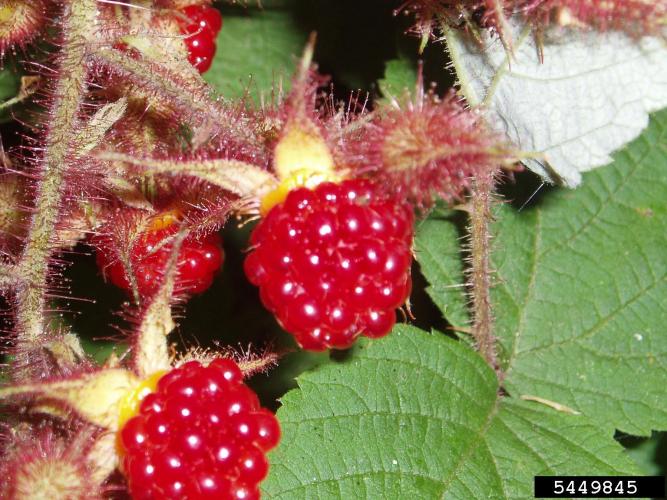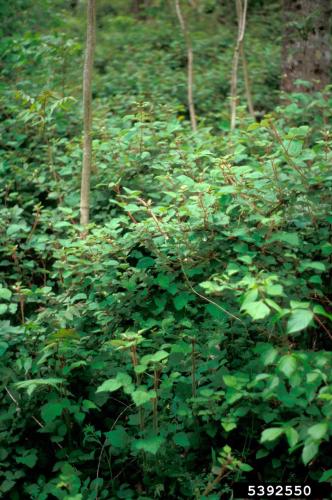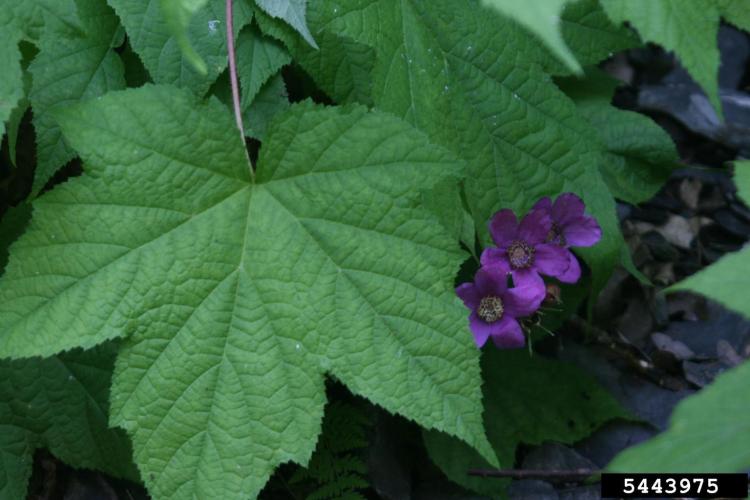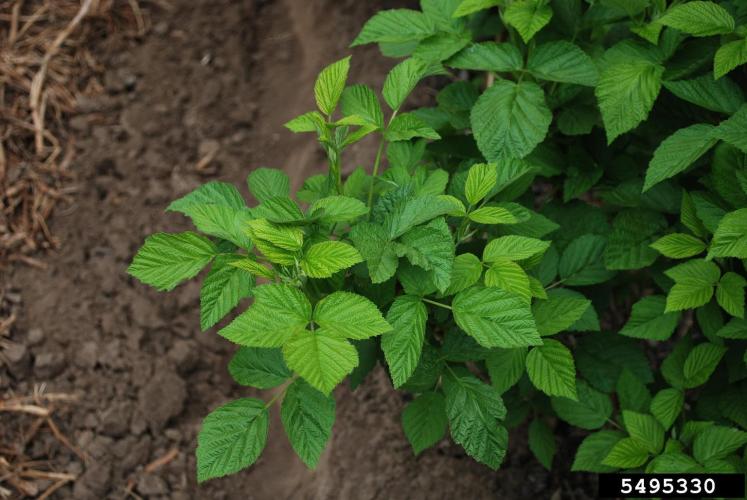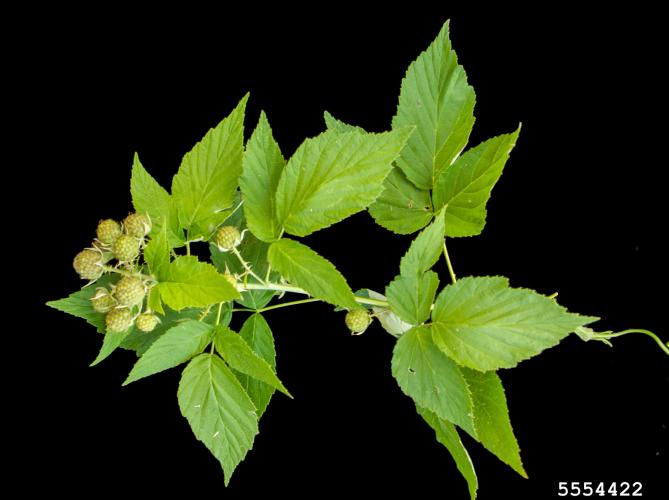Wineberry
Identification
APPEARANCE
Rubus phoenicolasius is a multi-stemmed, spiny, small shrub that invades open areas throughout the eastern United States. The canes have small spines and the entire plant is covered in minute, glandular, reddish hairs. It is related to other raspberries and blackberries, and shares characteristics of both. Like raspberries, wineberry has silvery underleaves, a fruit core that remains on the stem when the ripe fruit is picked, and thorns. It is differentiated from other raspberry species by the fine red hairs that grow densely on its stems (and flowers) causing a reddish hue to the plant. Canes can, under favorable conditions, grow to 9 ft. (2.7 m) in length.
FOLIAGE
The alternate leaves are compound with three heart-shaped, toothed leaflets. The undersides of the leaflets are silvery-white and very hairy.
FLowers
Small, white, 5-petaled flowers develop in May-June. The sepals are hairy and longer than the petals, giving the flowers an unopened look.
Fruit
The fruit (clusters of drupelets) are juicy and bright, shiny red in color. They are about 0.4 in. (1 cm) thick and may have fine hairs. They ripen in June to July.
Biology
Origin
It was introduced to North America in the 1890s as breeding stock for raspberries. It was found invading natural areas by the 1970s, and it is currently recorded in most states east of the Mississippi River and in Alabama (USDA PLANTS Database).
Habitat
Prefers moist conditions and full sun to partial shade. It grows in forests, fields, streams and wetland edge habitats, and open woods.
Ecological Threat
Wineberry’s growth habits, prolific seed production, and ability to form dense thickets enables this plant species to outcompete native vegetation and disrupt ecosystem dynamics. It is more aggressive than many of the native raspberry and blackberry species, and has a wider range of tolerance for light, soil
type, and moisture. Its establishment in forest understories as disturbance occurs can lead to its spread even in mature forests. Research conducted by Blossey and Skinner (2001) highlights the ecological impacts of Rubus phoenicolasius in invaded habitats, particularly in forests and riparian areas. The study found that wineberry can alter soil properties, reduce native plant diversity, and disrupt ecosystem processes, such as nutrient cycling. Furthermore, its ability to spread rapidly through both seed dispersal and vegetative reproduction exacerbates its ecological threat.
In addition to its direct ecological impacts, wineberry invasion can also have indirect consequences for native wildlife. For example, the displacement of native vegetation by dense wineberry thickets can reduce habitat availability and foraging opportunities for native species, potentially leading to declines
in biodiversity.
Vermont Distribution
The North American distribution is from eastern Canada, New England and New York south to Georgia and west to Michigan, Illinois, and Arkansas. It is
considered invasive in Maryland, Pennsylvania, Tennessee, Virginia, North Carolina, West Virginia, and the District of Columbia. According to iNaturalist,
there are 2 unconfirmed possible locations in Vermont, Brattleboro and Burlington.
How You Can Help
Wineberry is on the early detection list of plant species. Early detection of new infestations increases our ability to slow their spread and potentially eradicate them from affected areas.
Citations
Photo Credit
Wineberry, 5518063, Richard Gardner, Bugwood.org
Wineberry, 5449869, 5449840, 5274060, 5449845, 5449838, 5449901, Leslie Mehrhoff, Bugwood.org
Wineberry infestation, 5392550 John Randall, Bugwood.org
Purple flowering raspberry, 5443975, Chris Evans, Bugwood.org
Black raspberry, 5554422, David Cappaert, Bugwood.org
Red raspberry, 5495330, Howard Schwartz, Bugwood.org
Information Credit
